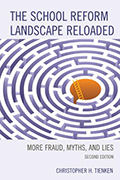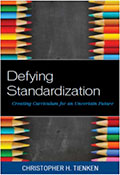Complexity Versus Difficulty: Don’t Be Fooled
The vendors and supporters of the Common Core State Standards claim that the Standards require greater emphasis on higher-order thinking than previous state standards in mathematics and English language arts. But what is higher-order thinking?
According to Webb (1997), thinking encompasses multiple dimensions, including the “level of cognitive complexity of information students should be expected to know, how well they should be able to transfer the knowledge to different contexts, how well they should be able to form generalizations, and how much prerequisite knowledge they must have in order to grasp ideas” (Webb, 1997, p. 15). Webb categorized the various dimensions into four levels, known as Webb’s Depth of Knowledge (DOK). The DOK levels define and categorize cognitive complexity of curriculum standards and tasks. The “DOK level of an item does not refer to how easy or difficult a test item is for students” (Wyse & Viger, 2011, p. 188). The focus of DOK is on cognitive complexity of required tasks or curriculum standards as opposed to difficulty.
As colleagues and I presented in our research A Comparison of Higher-Order Thinking Between the Common Core State Standards and the 2009 New Jersey Content Standards in High School, there is a difference in the type of thinking that takes place when students engage in complex material compared to material that is difficult. In general, complex material fosters more creative and strategic thinking whereas difficultly is based more on the concept of effort: No pain, no gain. The results of our research suggested that the Common Core are dominated by lower level, artificially contrived, difficult standards and provide few opportunities for creative and strategic thinking.
Differences Between Difficulty and Complexity
Although complexity and difficulty are necessary components of an intended curriculum, the Depth of Knowledge or complexity of a curriculum standard or cognitive learning objective is dynamic and encompasses the multiple dimensions of an objective ranging from the “level of cognitive complexity of information students should be expected to know, how well they should be able to transfer this knowledge to different contexts, how well they should be able to form generalizations, and how much prerequisite knowledge they must have in order to grasp ideas” (Webb, 1997, p. 15).
Sousa (2011) defined complexity as the thought processes required to address a task. Complexity can be thought of as the difference between remembering a fact or imitating a procedure and developing an original product or process. Remembering facts and imitating procedures are less cognitively complex than developing an original product or process.
Difficulty is a more static component of an objective that simply refers to the amount of work or effort a student must use to complete a task, regardless of complexity. For example, asking students to solve an addition problem with two one-digit numbers is less difficult than solving the same problem with four one-digit numbers. The complexity is still at the “remember and imitate procedure” levels, but the second problem is theoretically more difficult because it requires more effort to add more numbers. However, the difficult objective does not foster creative or strategic thinking. Difficulty only reinforces imitation and regurgitation of information and processes.
An uncertain future requires students to be able to think creatively and strategically. The Common Core product as curriculum vended does not provide those opportunities. Educators should engage in a careful review of their local curricula to ensure there are ample opportunities for complex and strategic thinking.
References
Sousa, D. (2011). How the brain learns. (4th Ed.). Thousand Oaks, CA: Corwin.
Webb, N. L. (2007). Issues related to judging the alignment of curriculum standards and assessments. Applied Measurement in Education, 20, 7–25.
Webb, N. L. (1997). Criteria for alignment of expectations and assessments in mathematics and science education (Research Monograph No. 6). Washington, DC: Council of Chief State School Officers.
Wyse, A.E. and Viger, S.G. (2011). How item writers understand depth of knowledge. Educational Assessment, 16(4), 185-206


